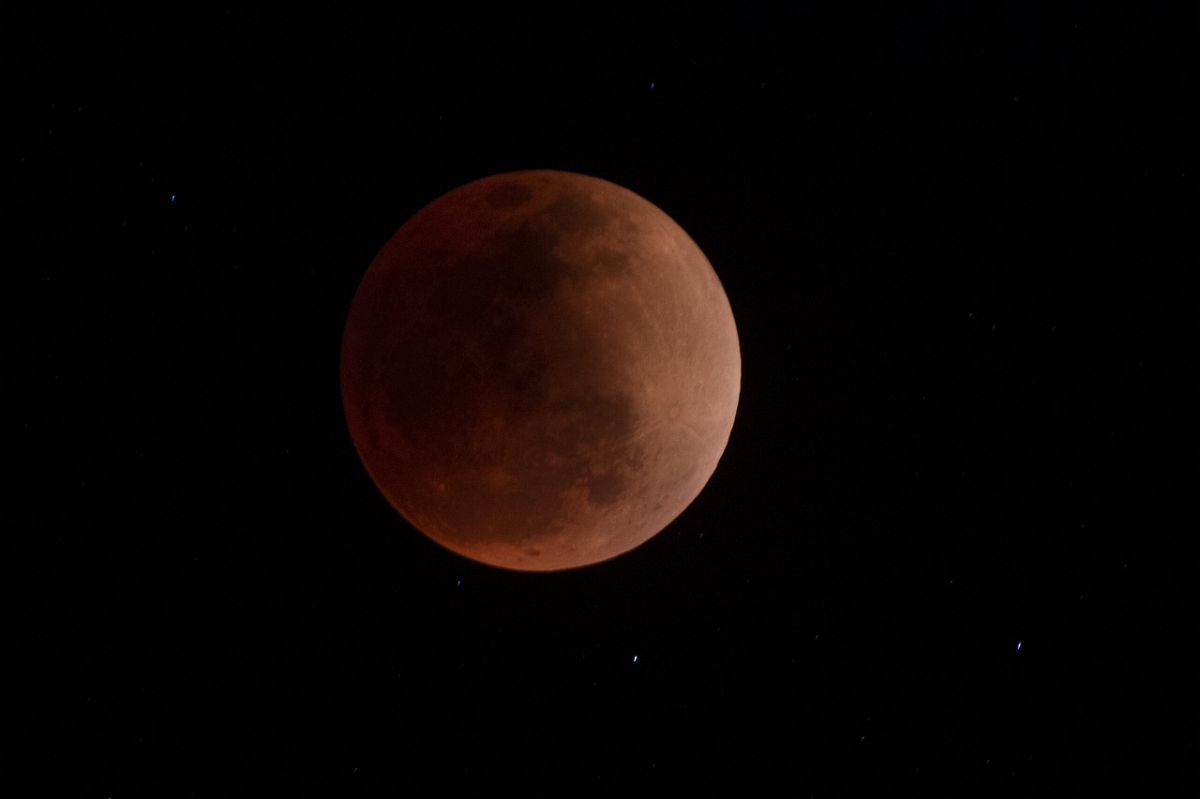Full moon will turn an eerie red during the total lunar eclipse

Originally Published: 07 NOV 22 14:42 ET
Updated: 07 NOV 22 15:06 ET
By Taylor Nicioli and Ashley Strickland, CNN
(CNN) -- Set to turn a coppery shade of red in the sky this Tuesday, November 8, the full moon will kick off Election Day with an early morning event of its own — a total lunar eclipse.
The second one of the year, the eclipse will begin at 3:02 a.m. ET, with the moon initially dimming for the first hour, and end at 8:50 a.m. ET.
At totality, the stage at which the entire moon will be in Earth's shadow, the moon will turn a dark reddish hue, which is why a total eclipse is also called a blood moon. Sky gazers will be able to see the striking effect beginning at 5:17 a.m. ET, according to NASA.
"They aren't that common, so it's always nice to get a hold of them when you can," said Dr. Alphonse Sterling, an astrophysicist at NASA's Marshall Space Flight Center in Huntsville, Alabama. "I think they're excellent learning devices for people who want to get into astronomy."
A total lunar eclipse occurs approximately once every 1 ½ years on average, with the next total lunar eclipse not taking place until March 14, 2025 — although partial and penumbral lunar eclipses will continue to occur in the meantime. A penumbral lunar eclipse happens when the moon moves through the outer shadow, or penumbra, of the Earth, so the visual effect is more subtle.
Those viewing the total lunar eclipse will be able to see the curvature of Earth's shadow as it begins to slowly swallow the moon completely. At least a portion of the phenomenon will be visible throughout eastern Asia, Australia, the Pacific, North America and Central America, according to NASA.
Every first full moon of November is called the beaver moon in honor of the semiaquatic rodents. This is the time of year when beavers begin to take shelter after storing their food for the winter, according to The Old Farmer's Almanac. The moon will be at its brightest at 6:02 a.m. ET, the almanac notes.
Viewing a lunar eclipse
A lunar eclipse occurs when the sun, Earth and moon align so that the moon passes into Earth's shadow. Because of this arrangement, unlike a solar eclipse, a lunar eclipse can be enjoyed from anywhere the moon is present during the night. Nearby stars are usually obscured by the moon's glow, but the moon will be dimmed enough for the duration of the eclipse that they will be revealed, according to Sterling.
"With solar eclipses, you have to be at the right place, but for lunar eclipses, it's not nearly as sensitive to location," Sterling said.
"The whole half of the earth that is in night during the period when the moon falls into the shadow can see it. So basically, it's available to half the world."
The same phenomenon that colors the sky blue and sunsets red is what causes the moon to turn its rusty red during a lunar eclipse, according to NASA. During a lunar eclipse, Earth's atmosphere disperses sunlight, allowing red, orange and yellow light to pass through, and scattering away the blue light that is typically seen with the moon.
In the eastern United States and Canada, the moon will set before the eclipse is over, so it's best to look toward the western horizon to see its entirety. Viewing a solar eclipse requires eye protection, but you can safely enjoy a lunar eclipse without any gear — though your view can be enhanced with binoculars.
"This is a really nice thing about lunar eclipses, in particular. You really need nothing except your eyes. The moon is a bright object, so you don't need a particularly dark place to view the event," Sterling said. "And the shadings, the beautiful red color that you see during the eclipse, you can see anywhere, even in the middle of a city."
Remaining events in 2022
After the beaver blood moon, this year has one more full moon event, according to The Old Farmer's Almanac. The cold moon takes place on December 7.
As for meteor showers, right now, you can view the South Taurids in the night sky. Catch the peak of these upcoming meteor shower events later this year, according to EarthSky's 2022 meteor shower guide:
• North Taurids: November 12
• Leonids: November 17-18
• Geminids: December 13-14
• Ursids: December 22-23
The-CNN-Wire
™ & © 2022 Cable News Network, Inc., a Warner Bros. Discovery Company. All rights reserved.
